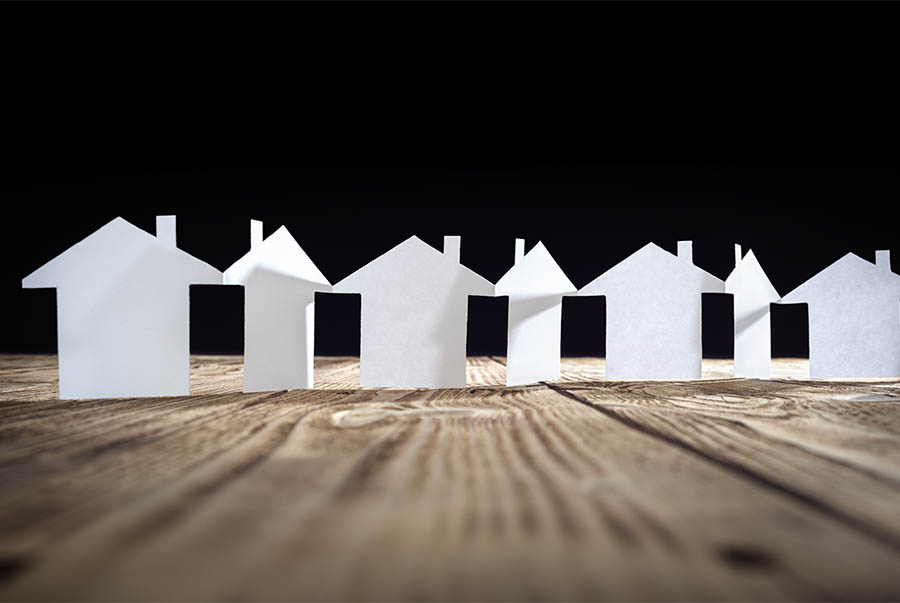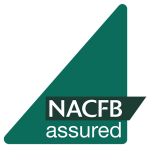Table of Contents
What is a property chain?
A property chain is a sequence of property purchases that are connected and normally need to happen at the same time, for all in the chain to legally complete.
For example, if person A owns a house, and then sells it to person B, the property chain for that house would be: A –> B. A very simple chain!
In a more complex example, if person A, B, C own a houses and person D was a first time buyer. Then person D needs to buy from C, but as C is buying from B and B buying from A, they all need to happen simultaneously, or one party will be without a property and the funds to purchase.
Why do property chains break?
There are several reasons why a property chain may be broken. Some common reasons include:
- A vendor (seller of the property) may decide they no longer want to sell
- A purchase may not get the mortgage funds they need and thought they could get
- Another purchaser could come in with a higher offer, breaking the current chain and creating a new one
- Fraud or misrepresentation: If a person is not truthful about their ownership of a property, or if they do not have the legal right to sell it, the property chain may be broken.
How to fix a broken property chain?
If a property chain is broken, it may be necessary to take steps to fix it. Here are some steps that may be helpful:
- You may have to find a new property if the vendor withdraws their property from the market, this could happen in any part of the chain.
- A party in the chain will have to source mortgage finance from another mortgage lender, firstly speaking to a mortgage broker to look at all options.
- You may be involved in a new chain and your solicitor has to make contact with new representatives for the new parties.
- There could be legal disputes that a solicitor will investigate for you and advise on the best course of action.
Will a property chain slow down buying a home?
A property chain can potentially slow down the process of buying a home, as it may be necessary to review and verify the property chain before the sale can be completed. In some cases, a break in the property chain can cause delays or complications, as it may be necessary to resolve any issues with the chain before the sale can proceed. However, the impact of a property chain on the buying process can vary depending on the specific circumstances and the complexity of the chain. It is generally a good idea for buyers to be aware of the property chain for a property they are interested in purchasing, and to consider how it may impact the buying process.
What happens when a property chain breaks?
If a property chain is broken, it can cause delays or complications in the process of transferring ownership of a property, it can also lead to the whole chain collapsing and no purchases going ahead. Depending on the cause of the break in the chain, it may be necessary to resolve any issues or disputes before the sale can proceed. In some cases, a break in the property chain may result in the sale being cancelled or postponed until the issue is resolved. If the break in the chain was caused by fraud or misrepresentation, it may be necessary to take legal action to rectify the situation. In general, a break in the property chain can be a complex and potentially costly issue, and it is important for all parties involved to understand the implications and take steps to resolve any issues as quickly as possible.
Bridging loan for broken chain
A bridging loan is a type of short-term financing that is often used when there is a gap between the purchase of a new property and the sale of an existing one. This type of loan can be useful in situations where there is a broken property chain, as it can provide the necessary funds to complete the purchase of a new property while the existing property is being sold.
Bridging loans are generally used for a period of a few months to a year, and they typically have higher interest rates than traditional mortgages.
They can be a useful option for those who need to move quickly and do not have the necessary funds available to complete the purchase of a new property before the sale of their existing one is complete. However, it is important to carefully consider the terms and conditions of a bridging loan and to ensure that you will be able to make the necessary repayments before taking out this type of financing.
How to keep a house chain moving
There are several steps that you can take to help keep a house chain moving:
- Communicate openly and honestly with all parties involved: It is important to keep all parties in the chain informed about the status of the sale and any potential delays or issues that may arise.
- Be responsive and timely in addressing any issues: If there are any issues or concerns that need to be addressed, it is important to address them promptly in order to avoid delays.
- Be flexible and open to negotiation: It may be necessary to be flexible and open to negotiation in order to keep the chain moving. This may involve making compromises or finding creative solutions to any problems that arise.
- Seek legal advice if necessary: If there are complex legal issues involved, it may be helpful to seek legal advice to help keep the chain moving.
- Stay organised and keep good records: It is important to keep good records and stay organized throughout the process, as this can help to ensure that everything runs smoothly and efficiently.
By following these steps, you can help to keep a house chain moving and minimize delays or disruptions to the process of transferring ownership.
Do you need finance for your property portfolio?
Or call and speak to one of our specialist brokers on 0800 316 2224




















